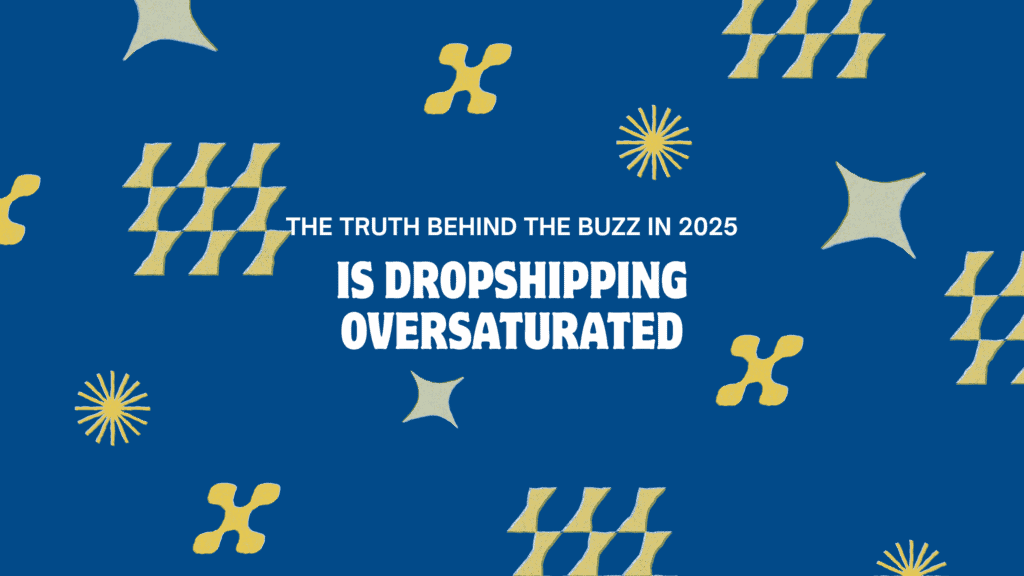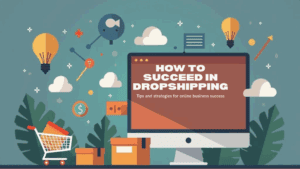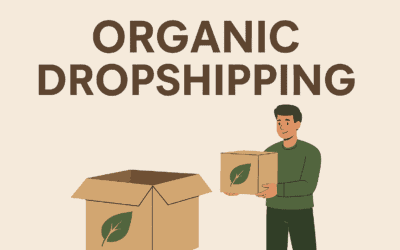
Dropshipping has always been regarded as one of the simplest and most accessible methods of launching an online business. It does not require much upfront capital and does not require taking any inventory, so it has found its way to millions of entrepreneurs, including college students and experienced e-commerce professionals.
But with its rising popularity over the past decade, a common concern has emerged:
“Is dropshipping oversaturated?”
If you’re thinking about starting a dropshipping business in 2025 or wondering whether it’s still worth your time, this article will break down the myths, facts, and future of dropshipping so you can make an informed decision.
Table of Contents
ToggleWhat Is Dropshipping? A Quick Recap
In dropshipping, a retail store does not have the goods it offers in stock. Rather, you sell a product that you have not bought yet to a third-party supplier, and in turn, this supplier ships the product to your consumer.
This business model is attractive because:
- You don’t need to invest in inventory.
- It requires low startup capital.
- It’s easy to launch and scale.
With platforms like Shopify, WooCommerce, and apps like DSers, CJdropshipping, and Zendrop, starting a dropshipping store has become even more convenient than ever before.
Why Dropshipping Feels Oversaturated
When people ask whether dropshipping is oversaturated, they’re usually referring to the sheer number of stores offering the same products. Here’s why that perception exists:
-
Low Barrier to Entry
Anyone with a laptop and an internet connection can start a store. The simplicity of starting a dropshipping business has led to a flood of new stores, many of which sell identical products from the same suppliers.
-
Copycat Stores
Popular dropshipping tools and winning product lists are accessible to thousands of users. As a result, when one store finds a successful product, hundreds of others copy it, leading to short product lifecycles.
-
Ad Fatigue
With everyone running the same ads for the same viral products, users often become “banner blind.” This leads to rising customer acquisition costs and declining ROIs for generic dropshippers.
-
Shifting Consumer Expectations
In 2025, customers are smarter and more sceptical. With Amazon Prime setting the standard for fast shipping and trust, waiting 20 days for a low-quality product is no longer appealing.
🧠 So… Is It Oversaturated?
No, but it’s evolving. Let’s break it down.
What’s Oversaturated:
- Copy-paste stores with no branding or customer focus.
- Generic AliExpress products with poor quality and long shipping times.
- Low-effort Facebook ads pushing “hot” products without proper targeting or funnels.
What’s NOT Oversaturated:
- Branded dropshipping stores with a clear niche and identity.
- High-ticket or unique products with strong positioning.
- Stores with original content (UGC, TikTok-style videos, storytelling).
- Fast-shipping solutions using local or private suppliers.
Dropshipping isn’t dying — it’s maturing. The easy-money gold rush days are over, but serious entrepreneurs can still thrive by playing smart.
How to Succeed in Dropshipping in a “Crowded” Market

Here are some strategies to rise above the noise in 2025:
-
Find a Real Niche
Rather than going after broad markets like “fitness” or “home decor,” go deeper. For example:
- Instead of “home fitness,” target “pilates gear for women over 40.”
- Instead of “pet accessories,” go for “eco-friendly cat toys for urban cat owners.”
Micro-niches = less competition + more targeted marketing.
-
Brand Your Store Like a Pro
Consumers want to buy from brands, not faceless stores. Invest in:
- A premium logo and visual identity.
- A professional, clean website design.
- Cohesive product photos and descriptions.
- Social proof and customer reviews.
-
Use U.S. or EU Suppliers
Use platforms like:
This reduces shipping times from weeks to days, improving customer satisfaction and retention.
-
Create Original Content
Relying solely on supplier-provided images and videos won’t cut it.
Use UGC (user-generated content), TikTok-style ads, influencer partnerships, and product demo videos to build trust and drive engagement.
-
Optimise for Retention
Instead of one-and-done sales, build email flows, upsells, bundles, loyalty rewards, and SMS marketing to turn buyers into long-term customers.
Is There Still Room to Grow in 2025?

Absolutely. Dropshipping still holds huge potential, especially in:
- Emerging markets (India, Latin America, Africa)
- Unexplored niches with passionate communities
- Sustainable or ethical products (eco-friendly packaging, cruelty-free goods)
- Hybrid models (dropshipping to validate, then switch to private label or in-house fulfilment)
Here’s what’s changed:
To succeed today, you need real marketing, solid branding, and customer obsession.
The Real Problems in Dropshipping
Before jumping in, it’s important to understand the challenges:
- Thin Margins: With rising ad costs and competition, profits can be razor-thin unless you price smartly.
- Supplier Reliability: One bad supplier can ruin your reputation.
- Customer Complaints: Delays, defects, or unclear return policies can damage your brand.
- Payment Holds: Stripe and PayPal may freeze funds for new stores until trust is built.
However, these challenges can be addressed with the right systems, tools, and mindset.
Should You Start Dropshipping in 2025?
Here’s a quick quiz:
| Question | Yes | No |
| Are you willing to research and commit to a niche? | ✅ | ❌ |
| Will you treat it like a business, not a get-rich-quick scheme? | ✅ | ❌ |
| Can you invest in branding, content, and customer support? | ✅ | ❌ |
If you answered mostly Yes, dropshipping is not oversaturated for you — it’s an opportunity.
If you’re looking for passive income with zero effort, you might struggle.
Final Thoughts: Adapt or Die
To wrap it up:
Is dropshipping oversaturated?
Only for those who do it lazily.
To everyone else, the ones who incline to innovate, brand, and bring actual value to the table, dropshipping in the year 2025 is going strong. It cannot be compared to what it was in 2018. That is good.
It is becoming more of the case that shortcuts are getting filtered out of the market, and those who take their businesses seriously. In case you are willing to play the long game, concentrate on brand-building, and keep up with the trends, indeed, dropshipping can still be highly profitable.
Recent Posts
- How To Start Dropshipping From Amazon To Shopify 2025
- How to Launch a Dropshipping Business Without Spending Money in 2025
- 9 Powerful Shopify B2B Apps for 2025, Structured by Sales Flow
- Organic Dropshipping: The Future of Sustainable E-commerce
- Temu vs AliExpress for Dropshipping in 2025: Which is Better?
Related articles
Start the dropshipping store now! is proudly powered by WordPress
 WhatsApp
WhatsApp


Recent Comments